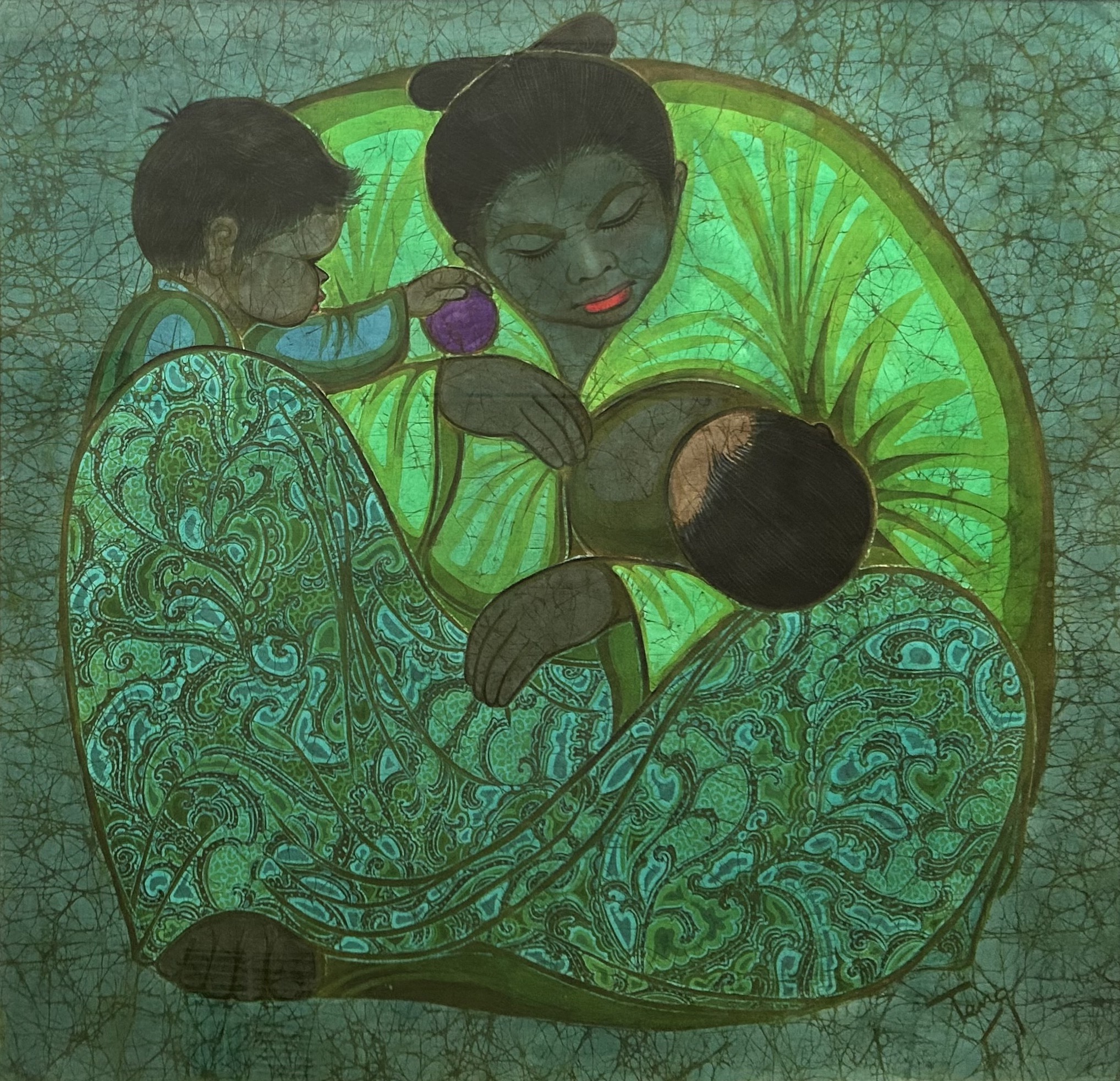(Feeding the Baby)
Chuah Thean TENG

Details
- Artist
- Chuah Thean TENG
- Title
- (Feeding the Baby)
- Medium
- batik on cloth
- Size
- 85 x 88 cm
- Details
Copyright the Estate of the Artist, courtesy the Batik Painting Museum, Penang
Related work: Feeding the Baby batik on cloth 90 x 90 cm
in the collection of the Batik Painting Museum, Penang
Provenance
the collection of Harry & Masha Flicker, Melbourne
Further Information
Celebrated as the 'father of batik painting' Malaysian artist Chuah Thean Teng is credited as the pioneer of developing batik to a fine art painted medium, elevating the everyday craft to an art form. Combining his training at the Amoy Art Institute in Fujian, China with his batik skills, Teng used the technique of batik to create unique paintings of decorative patterns and intricate figure compositions, depicting contemporary life in Malaysia, including landscapes, flora, fauna and figures.
Teng held his first solo exhibition at the Arts Council of Penang in 1955 and became perhaps the first Malaysian to hold an exhibition in Europe at the Commonwealth Institute, London in 1959. Exhibitions followed in America and Australia throughout the 1960s and 70s. Two of his images were used by UNICEF as greeting cards, giving wide popularity to his imagery. He has been honoured with three retrospective exhibitions and was awarded a ‘Datoship’ in 1988 and a Living Heritage Award in 2005.
The subject of Mother and Children is a favoured theme and his depictions of this classic and universal motif are amongst his most important works. This example, of which a variation is held by the Batik Museum of Penang, features a traditional Chinese composition of a square outside and round inside with simple curved lines and the patterned background using Teng’s tie-dye technique, allowing the wax to crack and the dye to seep through to create the craquelure effect, against which the figures are set. The colour green is significant in Malay culture, as a symbol of peace and life.
